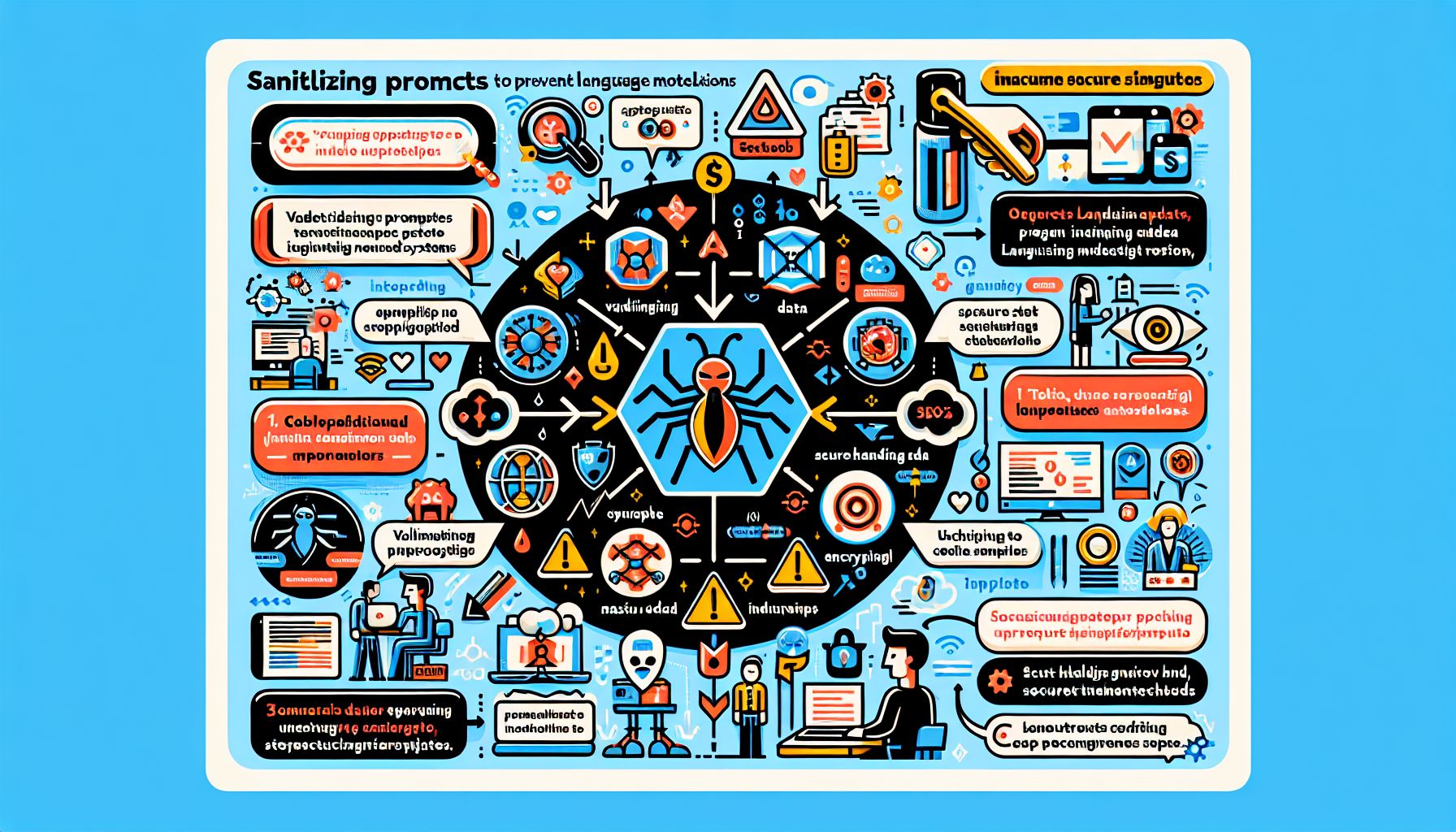📌 Let’s explore the topic in depth and see what insights we can uncover.
⚡ “Think your low-level managers (LLMs) are impenetrable to cyber threats? Think again! Let’s dive into how a seemingly innocuous prompt can become a ticking time bomb for injection attacks.”
In the world of data security, the rapidly evolving landscape is tantamount to a high-stakes game of cat and mouse. As the mouse, you’re diligently working to protect your Language Learning Models (LLMs) from the prowling cat – the relentless threat of injection attacks. Just like Tom and Jerry, the chase never truly ends. But don’t worry, you’re not alone, and there are plenty of tools and techniques at your disposal to outwit your feline foe. Let’s delve into the world of data security and learn how to sanitize prompts and prevent injection attacks in LLMs.
🧹 Understanding Prompt Sanitization

Shielding LLMs: A Lesson in Sanitization and Security
Think of your LLM like a fortress. The prompts you use are the gateways into that fortress. In a perfect world, your gateways would only allow friendly traffic – valid inputs that provide value and generate meaningful interactions. But alas, we don’t live in a perfect world. Mischievous agents are always on the prowl, ready to exploit any vulnerabilities. Enter prompt sanitization – your first line of defense. Prompt sanitization is like a meticulous gatekeeper who scrutinizes every visitor to your fortress. It involves cleaning and validating inputs to ensure they pose no threat. In the context of LLMs, it means checking every prompt that interacts with your model to ensure it’s safe and won’t lead to unforeseen consequences. Remember, your gatekeeper must be strict but fair. Overzealous sanitization might turn away legitimate traffic, while a lax approach might invite trouble. It’s about striking the right balance.
💉 Injection Attacks: The Fearsome Foe
Before we learn how to thwart our enemy, we need to understand it. Picture an injection attack as a stealthy saboteur, sneaking into your fortress with malicious intent. They’re not there to enjoy the view or sample your fine wines. Instead, they’re there to cause havoc by injecting harmful commands into your LLM. In the simplest of terms, an injection attack is where an attacker sends malicious data as part of a command or query, tricking the system into executing unintended commands or accessing unauthorized data. In LLMs, an attacker might attempt to manipulate the model’s behavior or extract sensitive information. Consider a Trojan horse. It might look like an innocent gift, but inside lurks an army of invaders. Similarly, a harmless-looking prompt might hide malicious code, ready to spring into action once inside your model.
🛡️ Defending Your LLM: Sanitization Techniques
Now that we’ve identified our foes, let’s arm ourselves with the necessary defenses. 🧩 As for Here, they’re some prompt sanitization techniques to shield your LLM.
Whitelisting
Whitelisting is like having a VIP guest list for your fortress party. Only those on the list can enter. For LLMs, this involves defining a list of acceptable inputs or patterns and rejecting anything that doesn’t match. It’s a powerful tool in your arsenal as it enforces a strict policy of what’s allowed.
Pattern Checks
Pattern checks are your gatekeeper’s keen eye for detail. They involve checking inputs against known patterns, rejecting anything that looks suspicious. It’s like a bouncer spotting a fake ID – if it doesn’t match the accepted format, it’s not getting in.
Escape Special Characters
Escaping special characters is like disarming your enemies before they enter your fortress. It involves neutralizing certain characters in the input that could be used to inject malicious code. It’s like confiscating a saboteur’s tools – without them, they’re powerless.
🎯 Preventing Injection Attacks: Best Practices
With your gatekeeper now well-equipped, let’s turn our attention to some best practices to prevent injection attacks in LLMs.
Least Privilege Principle
Operating on the principle of least privilege is like only giving your fortress guards the keys they need. It involves ensuring that your LLM only has the necessary permissions to perform its required functions and nothing more. This way, even if an attacker gets in, they’re limited in what they can do.
Regular Updates and Patches
Keeping your LLM updated and regularly applying patches is like reinforcing your fortress walls. It involves staying on top of the latest security vulnerabilities and fixes, ensuring that your defenses are always at their strongest.
Training and Awareness
Training and awareness are your early warning system. They involve keeping abreast of the latest attack tactics and training your team to spot the signs of an impending attack. It’s like having a network of scouts, always on the lookout for potential threats.
🧭 Conclusion
Defending your LLM from injection attacks is an ongoing battle. Like a vigilant fortress commander, you must always be on guard, ready to repel any threats. By sanitizing your prompts and employing best practices, you can effectively fortify your defenses and keep your LLM safe. Remember, security is not a one-time event but a continuous process. It requires constant vigilance, regular updates, and a well-trained team. But with the right strategies and tools, you can turn your LLM into an impregnable fortress, able to withstand even the most cunning of injection attacks. Keep your gatekeeper alert, your walls high, and your scouts vigilant. After all, the safety of your LLM depends on it.
🌐 Thanks for reading — more tech trends coming soon!
